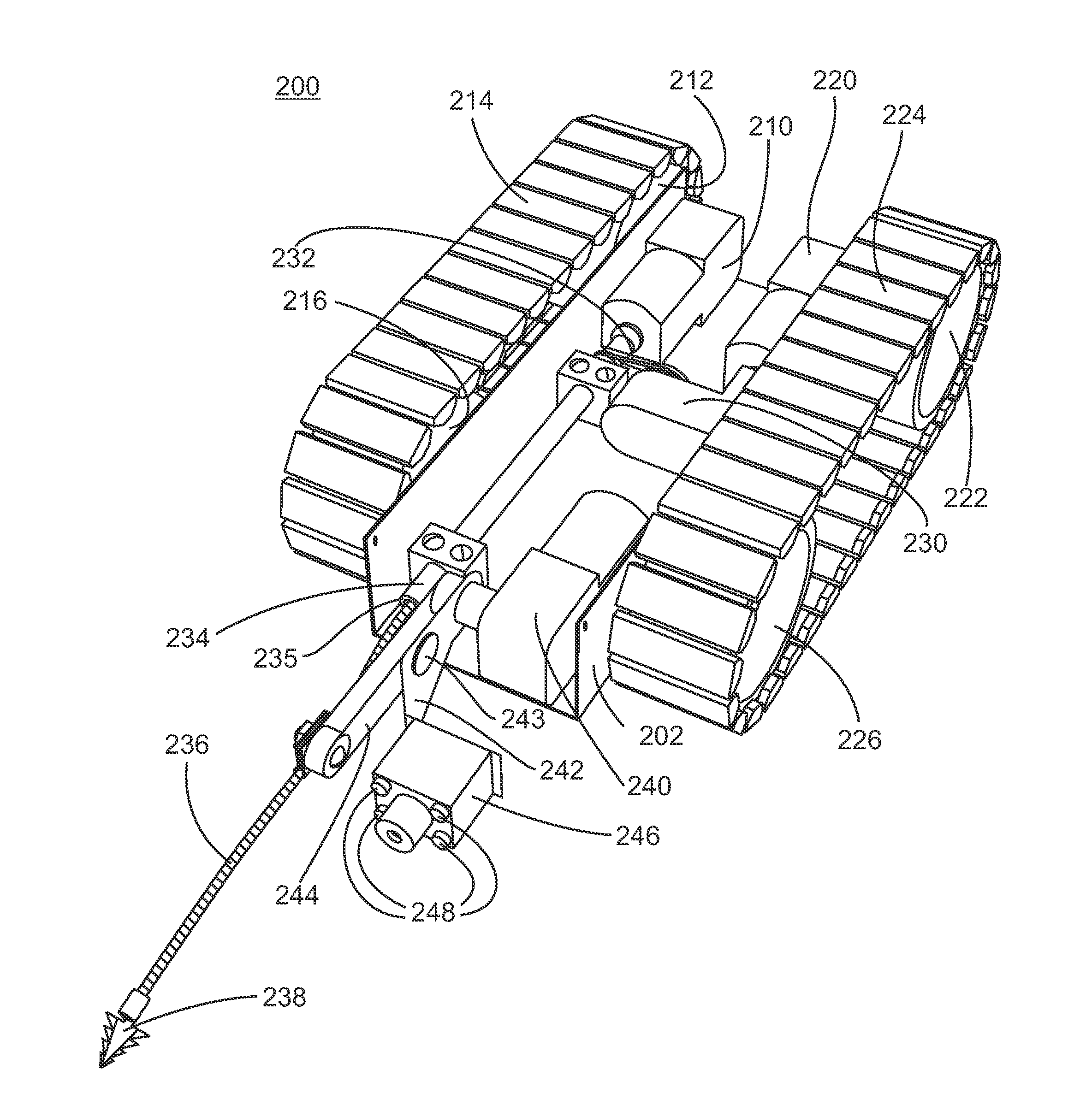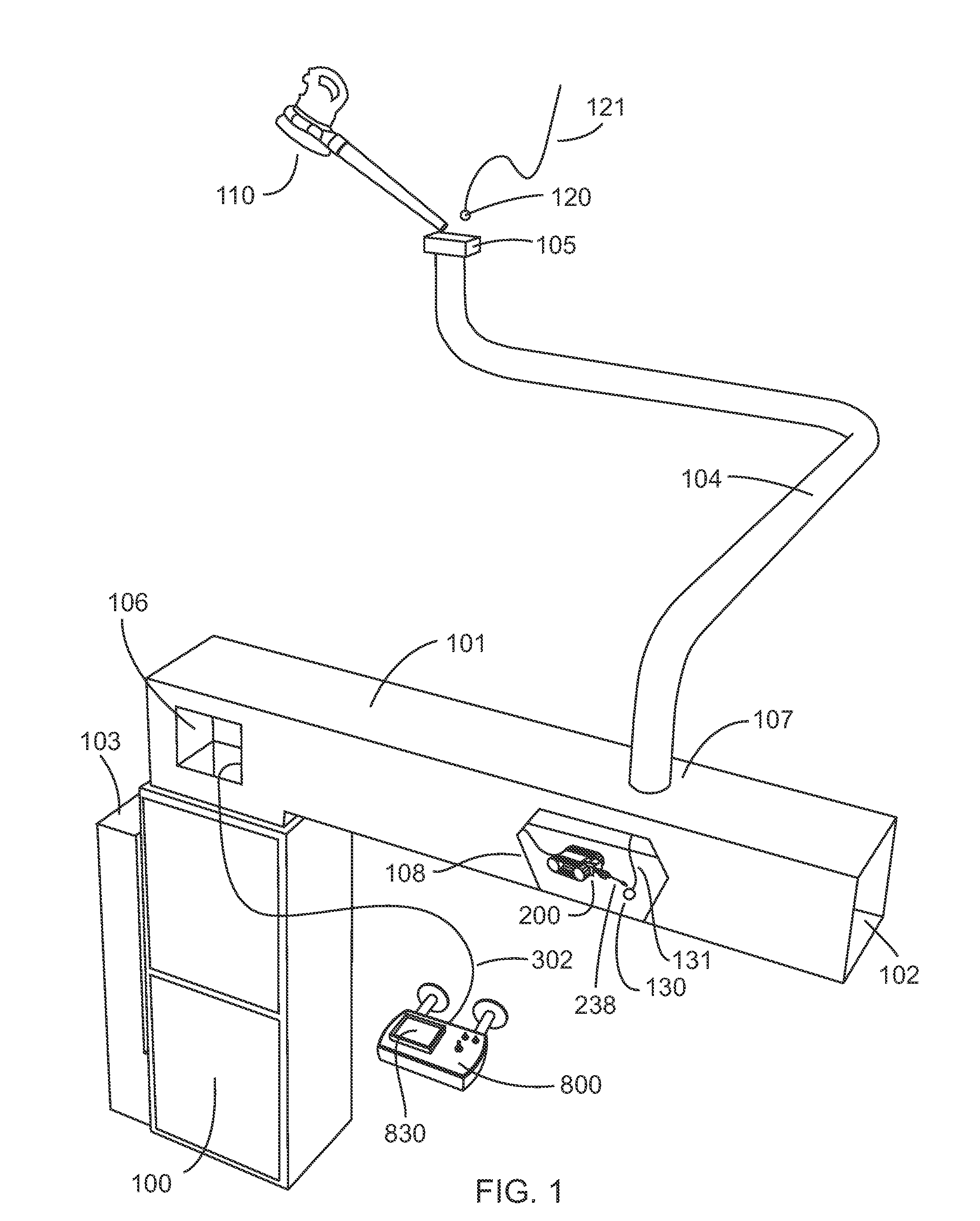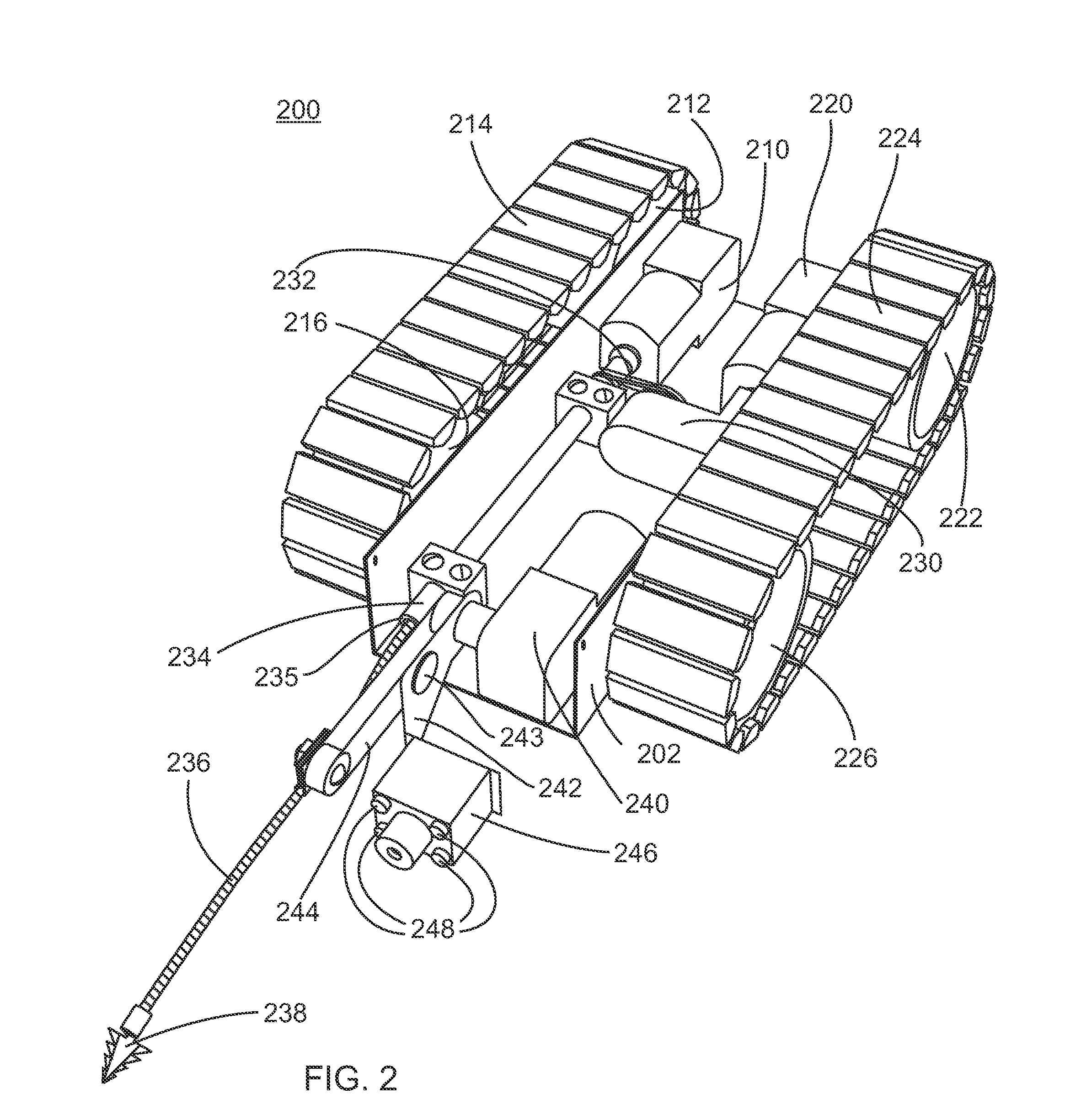Remote controlled vehicle for threading a string through HVAC ducts
a remote control vehicle and duct technology, applied in the direction of remote control toys, cables, cables, etc., can solve the problems of airflow coming from all of the leakage in the duct system, the method is not working well for some duct systems and specific duct paths, and the control wires cannot be easily accessible from the damper
- Summary
- Abstract
- Description
- Claims
- Application Information
AI Technical Summary
Benefits of technology
Problems solved by technology
Method used
Image
Examples
Embodiment Construction
[0040]FIG. 1 is a perspective view of a typical HVAC system found in residential dwellings. HVAC equipment 100 includes a fan for generating a flow of warmed or cooled air through a network of supply ducts that distribute the air through out the dwelling. The duct network includes a main trunk 101 connected to the supply plenum of the HVAC equipment 100. Only a small section of the main trunk is shown. The open end 102 is connected to the remainder of the duct network. A smaller duct 104 connects to the main trunk at 107 and provides a path for airflow to vent 105. There are one or more vents in each room of the dwelling. Each of the other vents is connected to a smaller duct that also connects to the main trunk. Dwellings typically have 10 to 30 vents; only one vent of many is shown in FIG. 1. Air is returned to the HVAC equipment through duct 103 which is connected to one or more large centrally located return vents in the dwelling. In many dwellings, the duct network is enclosed ...
PUM
 Login to View More
Login to View More Abstract
Description
Claims
Application Information
 Login to View More
Login to View More - R&D
- Intellectual Property
- Life Sciences
- Materials
- Tech Scout
- Unparalleled Data Quality
- Higher Quality Content
- 60% Fewer Hallucinations
Browse by: Latest US Patents, China's latest patents, Technical Efficacy Thesaurus, Application Domain, Technology Topic, Popular Technical Reports.
© 2025 PatSnap. All rights reserved.Legal|Privacy policy|Modern Slavery Act Transparency Statement|Sitemap|About US| Contact US: help@patsnap.com



